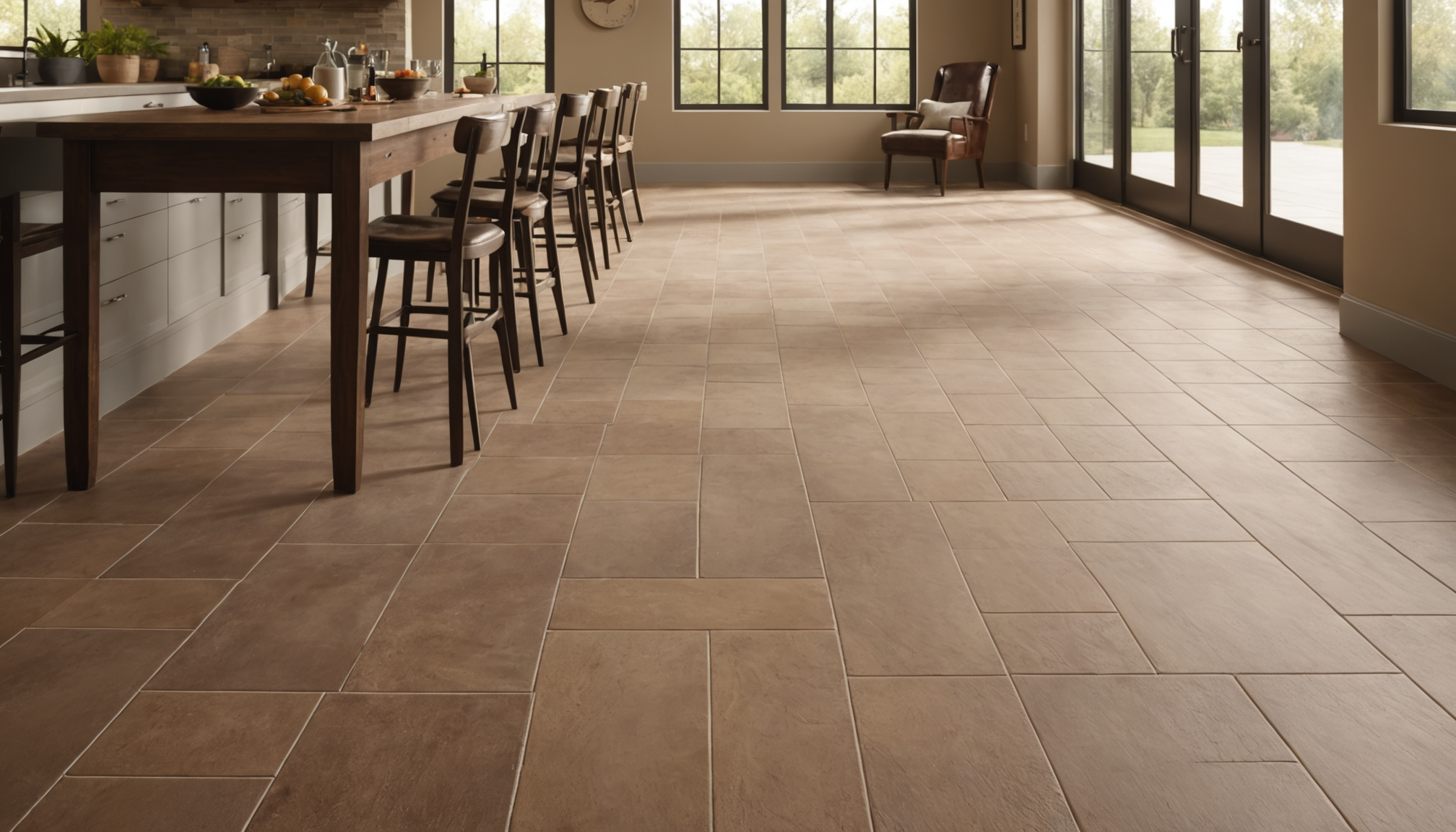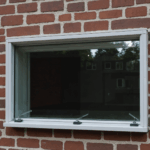When it comes to choosing flooring options for family-friendly homes, safety and durability stand as pivotal considerations. The flooring must withstand daily wear and tear while ensuring a safe environment, especially for young children and pets who are often more vulnerable to slips and falls. Given these necessities, it’s vital to assess various materials concerning their performance under frequent use and their ability to maintain safety standards.
One key factor in evaluating flooring materials is slip resistance. Floors with a high coefficient of friction provide better slip resistance, reducing the risk of accidents. Textured surfaces, such as those found in natural stone tiles or certain types of vinyl and laminate flooring, are particularly effective in providing additional grip.
Durability is another crucial element. Floors in high-traffic areas must be hard-wearing to resist scratches, dents, and general damage from foot traffic, pet claws, and the occasional dropped item. Materials like ceramic tile and hardwood have long been favored for their resilience, though each has its considerations. For example, while hardwood can accumulate scratches over time, it can also be sanded and refinished, extending its lifespan significantly. Alternatively, engineered wood offers similar aesthetics with added stability and moisture resistance.
Comparing the durability and safety of different flooring options can help make an informed decision. Here’s a quick comparison of common flooring types:
| Flooring Type | Durability | Slip Resistance | Additional Considerations |
| Ceramic Tile | High | Good with textured finish | Cold to the touch; grout maintenance required |
| Hardwood | Moderate – High | Moderate | Can be refinished; not ideal for moisture-rich areas |
| Vinyl | High | Excellent | Easy to clean; softer underfoot |
| Laminate | Moderate | Good | Surface can chip; provides a realistic wood look |
| Natural Stone | High | Varies (better textured) | Stunning aesthetics; requires periodic sealing |
Additionally, it’s wise to consider safety certifications and labels when selecting materials. Products that meet criteria set by various safety standards organizations can offer extra assurance. For example, flooring labeled with ASTM (American Society for Testing and Materials) standards has been tested for specific safety parameters.
Beyond the mechanical attributes, the installation process also impacts overall safety and durability. Proper installation is crucial for the longevity and safety of the floor, ensuring it remains stable and secure. Working with professional installers who understand the unique demands of different materials will fortify the flooring’s resilience and safety in a family environment.
Stain-resistant materials
Families often prioritize stain resistance when selecting flooring due to the inevitable spills and messes that come with active households. Choosing a floor that can withstand stains not only keeps the home looking clean and welcoming but also reduces the stress of ongoing maintenance. Here’s a detailed guide to understanding and selecting stain-resistant materials for your family-friendly flooring:
1. Identify High-Traffic and Spill-Prone Areas:
Begin by assessing where in your home the likelihood of stains is highest. Common areas might include the kitchen, dining room, and any playrooms. These zones require materials that can handle repeated exposure to food, liquids, and potentially staining agents like crayon or marker.
2. Consider Flooring Materials with Built-In Stain Resistance:
Some materials are naturally more resistant to stains. Others have been specifically engineered to repel stains. Evaluate the options:
– Vinyl Flooring: This is a top choice for families, especially luxury vinyl tile (LVT) which offers durability and high resistance to stains. Its smooth, non-porous surface makes it difficult for spills to penetrate, allowing for easier cleanup.
– Porcelain and Ceramic Tiles: With a high density and lack of porosity, these tiles are naturally resistant to most stains. They offer a lasting solution in rooms prone to heavy use and spills, such as kitchens and bathrooms.
– Laminate Flooring: While not naturally stain-resistant, many modern laminate options include a stain-resistant coating. When spills are addressed quickly, laminate can be a practical choice.
– Stain-Proof Carpet Options: Though carpet is traditionally difficult to maintain, many manufacturers now offer ranges treated with stain-resistant chemicals, or made from inherently stain-repelling fibers like solution-dyed nylon or polyester.
3. Explore Protective Finishes and Treatments:
If you’re opting for natural materials such as hardwood or some types of natural stone, applying a protective seal can enhance their resistance to staining. Here’s what to do:
– Apply a Sealant: For materials like natural stone, an appropriate sealant can fill microscopic pores, reducing absorption of liquids and stains.
– Opt for Factory-Pre-Treated Flooring: Some hardwoods and engineered woods are treated with urethane or other sealants during manufacturing to provide a ready-to-use stain-resistant surface.
4. Maintenance Practices to Boost Stain Resistance:
Even the most stain-resistant surfaces benefit from routine maintenance to increase longevity:
– Prompt Clean-Up: Encourage prompt cleaning of spills to prevent any chance of staining.
– Regular Cleaning: Establish a regular schedule for sweeping and mopping to avoid buildup that can wear down protective finishes.
– Using Appropriate Cleaning Solutions: Ensure that you use cleaning agents that are suitable for your flooring material to maintain its stain-resistant qualities without causing damage.
5. Evaluate Cost-to-Benefit Ratios:
Consider the long-term savings on cleaning supplies and the reduced need for replacements. While some stain-resistant materials or treatments may have a higher upfront cost, the investment often pays off in reduced maintenance demands and longevity of the flooring.
By thoughtfully selecting stain-resistant materials and employing regular, proactive care, you can equip your family-friendly home with flooring that is attractive, functional, and easy to maintain, providing peace of mind amid the hustle and bustle of family life.
Comfort and warmth
When it comes to creating a family-friendly home, choosing flooring that provides comfort and warmth is crucial. Families often have a diversity of activities, from children playing on the floor to adults relaxing and entertaining, all of which demand a cozy and inviting atmosphere. Below is a detailed look into making choices that enhance comfort and warmth in your flooring.
A major aspect of comfort is how forgiving a floor feels underfoot. Materials like carpet and cork are known for their soft texture and give, making them ideal for rooms where family members might sit or lie on the floor. Carpet, with its thick fibers, can offer a plush underfoot experience, excellent for playrooms, bedrooms, and living areas. Meanwhile, cork brings a naturally cushioning effect due to its cellular structure, which not only provides comfort but also contributes to sound insulation, dampening noise throughout the home—an essential feature for active households.
Warmth is another vital component in selecting family-friendly flooring, as it can greatly influence the coziness of a living space. Radiant heat flooring is a popular choice for those looking to combine comfort with energy efficiency. This system can be installed under a variety of floor types, including tile and engineered wood, providing consistent warmth throughout rooms without the uneven heat distribution often associated with traditional radiators. This can be a particularly appealing option in cooler climates, where maintaining a warm environment is critical.
For families who prefer hard surface flooring but still want to maintain a warm ambiance, hardwood and engineered wood are excellent options. These materials have a natural ability to keep warm and add a rich, inviting texture to any room. They serve well in living areas and bedrooms, where comfort is paramount. Adding area rugs can further enhance warmth and aesthetics, offering comfortable spots for children to play or parents to relax.
Another consideration is the ambient temperature of the floors. Luxury vinyl flooring, crafted to mimic the appearance of hardwood and stone, often feels warmer to the touch compared to natural stone or ceramic tiles. It pairs well with rugs for added comfort and warmth, making it suitable for family homes.
Moreover, the inclusion of thermal underlayments under laminate or hardwood floors can enhance the feeling of warmth. These layers provide insulation against cold subfloors and contribute to a more consistent temperature, making spaces comfortable to walk on, even barefoot.
In sum, when selecting flooring for comfort and warmth, it’s important to consider both the texture and temperature of the materials. By doing so, you ensure that your home remains a welcoming haven for family activities all year round.
Easy maintenance choices
In a bustling family home, practicality often goes hand in hand with comfort. The flooring you choose should simplify your daily routine and keep your household running smoothly, especially when it comes to upkeep. Opting for easy-to-maintain flooring is a smart move that saves time and effort, leaving you with more opportunities to enjoy family life.
Vinyl flooring stands out as a top pick for families craving minimal maintenance. Its non-porous surface repels spills and dirt, making cleaning as simple as a quick sweep or mop. The many design options available in luxury vinyl tile (LVT) and luxury vinyl plank (LVP) mean you can enjoy the look of wood or stone without the high maintenance. Plus, the robust nature of vinyl flooring makes it an excellent choice for high-traffic areas that endure the hustle and bustle of daily life.
For those who favor a traditional aesthetic, hardwood or its close cousin, engineered wood, offers elegance with easier upkeep than one might expect. Engineered wood, in particular, provides stability and a resistance to moisture that pure hardwood lacks, making it a practical choice for busy households. Regular sweeping and occasional refinishing keep these floors looking exquisite with relatively low effort.
Ceramic and porcelain tiles are also renowned for their low maintenance needs. Their durable, water-resistant nature makes them ideal for kitchens and bathrooms, where spills are common. A quick wipe-down restores their shine, while grout lines might require occasional attention to maintain their appearance. However, innovations in tile technology have introduced larger format tiles and thinner grout lines, reducing the amount of maintenance needed.
Laminate flooring is another accessible option, blending the visual appeal of wood with the ease of maintenance associated with synthetic surfaces. The top wear layer of many laminate options is designed to resist scratches and stains, while a simple cleaning routine involving sweeping and damp mopping will help maintain its fresh look.
Stain-resistant carpets, with their forgiving nature, make an excellent floor covering where coziness is desired without compromising on upkeep. Modern carpets often come treated to repel spills and resist staining, making quick responses to accidents all that’s needed to keep them tidy. Choosing a carpet with a lower pile can also reduce the amount of dust and dirt trapped in the fibers, where regular vacuuming proves most effective.
Beyond material choice, embracing technological advancements such as robotic vacuums can streamline floor maintenance even further. Integrating smart home technology allows for scheduled cleanings, taking the hassle out of everyday chores.
Ultimately, by making informed decisions about materials and maintenance practices, you can select flooring that balances functionality and family friendliness, ensuring it remains a beautiful and convenient backdrop to your daily life.
Eco-friendly options
As environmental consciousness continues to grow, many families are seeking ways to make their homes more sustainable. Flooring is one such area where eco-friendly options not only reduce environmental impact but also contribute to a healthier home environment.
Bamboo flooring is an excellent sustainable choice. As a rapidly renewable resource, bamboo grows much faster than traditional hardwoods, typically reaching maturity in just three to five years. Its durability and appealing aesthetic make it a popular choice for eco-conscious families. Bamboo’s resilience is comparable to oak, making it suitable for high-traffic areas, and its natural resistance to moisture and insects is a bonus.
Cork flooring is another eco-friendly option gaining traction. Harvested from the bark of the cork oak tree, cork is a renewable material that doesn’t harm the tree when harvested. Not only is it sustainable, but it also offers excellent thermal and acoustic insulation. Its soft, cushioned feel underfoot adds to comfort, a significant consideration for families with young children or pets. Cork is naturally resistant to mold, mildew, and pests, reducing the need for chemical treatments and promoting indoor air quality.
Reclaimed wood offers an authentic, rustic look while making use of existing materials, reducing the demand for new lumber. This recycling aspect makes reclaimed wood an environmentally sound choice. It carries a unique history, often featuring marks and imperfections that tell a story, adding character to any room. Each piece of reclaimed wood is one of a kind, and using it helps preserve natural forests.
Linoleum, often confused with vinyl, is another option made from natural materials like linseed oil, cork dust, and wood flour. It is biodegradable and free from harmful VOCs, making it a healthy choice for interior air quality. Linoleum is durable, with some products lasting up to 40 years, and comes in a variety of colors and patterns to suit any decor.
When considering eco-friendly flooring, it’s also valuable to look for certifications that verify the sustainability of the product. Labels such as the Forest Stewardship Council (FSC) certification for wood products, or Cradle to Cradle Certified, assure that the flooring materials meet strict environmental, social, and economic standards.
By opting for eco-friendly flooring choices, families contribute to sustainability and create a safe and healthy environment that aligns with a growing commitment to being stewards of the planet. These options not only provide the functional needs of a family home but also ensure future generations benefit from a mindful approach to our planet’s resources.
In conclusion, selecting family-friendly flooring involves balancing a variety of factors, from safety and durability to aesthetics and environmental impact. By considering stain resistance, ease of maintenance, and comfort, while ensuring eco-friendly qualities, you can choose a flooring solution that meets your family’s needs. Thoughtful choices lead to a home that is not only beautiful and practical but also a safe haven that reflects your values and supports your lifestyle for years to come.


